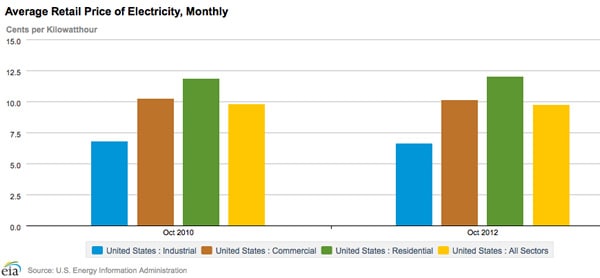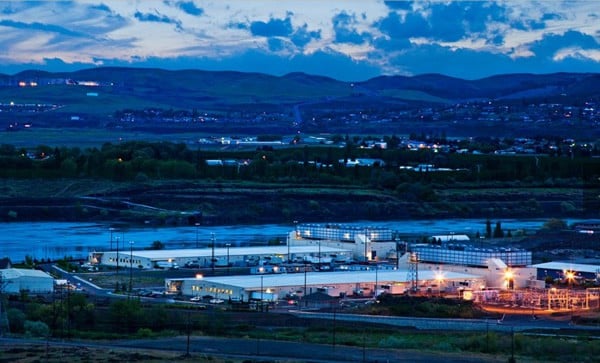The quest for cheap energy and cheap labor is a conquering human urge, one that has played out with notable ferocity starting with the Industrial Revolution. The introduction of coal into British manufacturing and the more recent outsourcing of Western manufacturing to Asia have marked key thresholds in this ongoing progression.
But despite the harvesting of additional productivity gains from the more recent revolution in information technology, the suite of macro data suggests that the rate of advancement in physical production has slowed, notably, in the past thirty years.
Seen in this light, the greatest gains to global industrial production were probably enjoyed from the late 18th century (when coal extraction and use began in earnest) into the mid-20th century (when oil reached broad distribution). In contrast, computers, the Internet, and the leveraging of developing world labor might eventually be seen as the finishing touches on this great industrial wave.
The Siren Song of the Robot
Indeed, the world now faces a double constraint to any further revolutionary gains to physical production: resource scarcity and the diminishing supply of the cheapest global labor, as wages in the Non-OECD have most likely seen their low.That we have reached this juncture probably explains why a new idea has arisen: The advent of robots.
That fleets of more technically-proficient robots becoming ever more encompassing in their role in the economy will trigger the next Industrial Revolution, the one that does indeed deliver extraordinary productivity gains. The Rise of Machine Intelligence, it’s now anticipated, will finally pull GDP back to the higher growth path seen in previous industrial advances.
The past year has been a fertile time to consider this possibility. In March of 2012, Amazon.com bought the warehouse robot company, Kiva Systems. It seems not coincidental that Amazon has also engaged in a new wave of construction, building distribution centers poised to leap into an age of next-level automation. Each one, in its vastness and architecture, seems perfectly set up to reduce the quantity of human labor required to run Amazon’s business. From The New York Times article:
“Amazon has not had great margins,” Jason Helfstein, an analyst at Oppenheimer & Company. “One has to believe they looked at this and thought, ‘Why not just own it and take all the technology in house?’” The acquisition comes as Amazon aggressively adds distribution centers to service its growing consumer base. The company has heavily promoted its Prime service, which provides customers two-day shipping for $79 a year. Last year, Amazon said it planned to add 17 warehouses, bringing its total to 69.You can see the video of Kiva robots here, acting as automated shelf and inventory movers. Note also the remark from the Oppenheimer analyst, concerning Amazon's poor margins. (Well, that's not news). However, it's a key theme to the pressures fated to drive the rise of machine intelligence (Capitalism demands it).
Accordingly, it’s not surprising that even energy companies like ExxonMobil are thinking about the global shift to automated manufacturing, data centers, and, importantly to Exxon, the rise of electricity (I have been writing continually over the past year about the transition from a world running on liquid BTUs to a world running on power. Please see Rise of the Global PowerGrid, August 2012).
In its just released Annual Energy Outlook, looking ahead to the year 2040, Exxon writes:
One of the emerging drivers of demand globally relates to digital warehouses. The New York Times reports that on a worldwide basis, these data facilities use about 30 billion watts of electricity, roughly equivalent to the output of 30 nuclear power plants. Data centers in the United States are estimated to account for one-quarter to one-third of that load.2012 was also a year in which military drones finally penetrated public awareness levels, given their widespread use by the military. WIRED magazine has declared that 2012 was the year of the drone in Afghanistan. Indeed, the military drone is increasingly carrying the weight not only of U.S. ground operations globally, but, assuming that the U.S. is in a leadership position now in the field of military drones, we can conclude that unmanned craft are creeping up to become a feature of U.S. foreign policy.
Let’s pause here and consider that in just these two examples. We have one type of robot – the military drone – whose greatest contribution is to radically reduce the amount of resources required to deliver lethal strike capability. And we have the other, whose promise is to displace human labor on the shop floor (or in Amazon’s case, the inventory floor).
The replacement of human labor and its myriad, associated costs is revolutionary. The promise for robots to take energy input costs down a notch, at a time when the price level for energy has gone through a phase shift higher, is compelling. If we assume that the I.T. revolution so far has delivered only small, incremental gains to the production of physical goods, then a robot revolution could finally usher in the changes that critics correctly say has not yet been delivered by a world of bits.
The combination of robots and cheap electricity could well unleash a new phase of profitability for corporations – and, of course, the owners of the means of production. What’s less likely, however, is that any such revolution is sustainable.
Because unlike the Industrial Revolution, which added powerful BTUs in the form of coal to augment human labor, thus creating a tidal wave of profits and increased wages, a robot revolution promises to furnish the world with stuff at the expense of human employment.
Many thinkers currently writing on this subject believe that a labor force deprived even further of purchasing power, yet given greater access to cheap goods, will wind up richer on the whole. I won’t say that’s wrong, but I will say it seems unlikely.
Radical Price Shifting
Let’s engage in a thought experiment, a scenario in which robots almost totally disrupt a particular type of consumer good. I’m choosing an example that I think would be most favorable to those who are sanguine about a robot-manufactured world, in which our wealth and free time are enhanced and people “become liberated to engage in other activities.”Given the daily drudgery of cooking and meal preparation, let’s imagine that a company is able to take high-end cooking ranges, high-end cooking equipment, and high-end refrigerators and freezers, and deliver them to market at discounts up to 50% off current prices. There is already a cultural shift underway to eat home-prepared food. Arming consumers during a time of higher food costs with the very best tools to prepare and store food dovetails nicely with current trends and household cost pressures.
White goods, such as these, are a substantial part of furnishing a home. By radically lowering the price of these high-end tools, the owners of private homes and also apartments are more easily able to buy, prepare, and freeze food, thus freeing up capital (time) for other pursuits. Taking a look at the manufacturing locale, and input costs, of our hypothetical new company will be instructive.
We’ll call our new whiteware manufacturer Man Who Fell to Earth, Inc. (MWFE).
No Need for China
Western economies burden corporations with complex labor regulations and even more onerous tax liabilities. The decision to place a human being on the payroll in France, Britain, or the United States is not taken lightly, and it represents a huge increase in costs for health care, taxes, and unemployment insurance. A person hired at a salary of $125,000 can imply total costs double that amount. This is why cheap labor in Asia has been such a draw for Western corporations. But now that China has reached the Lewis Turning Point, there is less reason to locate there.Instead, Man Who Fell to Earth (MWFE) needs to think about shipping costs and energy input costs, because robots run on electricity. As it turns out, the United States has some of the cheapest electricity rates in the OECD. Average U.S. rates are just below 10 cents per KWh, and are stable as well. Even better, industrial and commercial rates are even lower. From the most recent data, via EIA Washington:
Robots need no healthcare and incur no payroll taxes. Indeed, as machines, they would be conveniently depreciated like other capital equipment.Owing to U.S. hydropower and our cheap natural gas-fired powergrid, it’s no longer clear that a factory making stoves, refrigerators, and cooking equipment with robots would be any cheaper in Asia. Indeed, current data suggests the price of electricity in China is roughly around 7.5 cents (or higher) per KWh.
So, where might be a good locale for MWFE and its factory?
The Columbia River: The Dalles
Within the U.S., the cheapest electricity rates are in the Pacific Northwest. For the very same reasons that Amazon and Google have chosen The Dalles to site data centers, our Man Who Fell to Earth, Inc would find access to rail and river routes would set up the operation well, not only to receive raw materials but to ship to both North American and Pacific Markets.The Pacific Northwest is also the site of the largest smartgrid demonstration project in the U.S., operated by Battelle Labs and the Department of Energy. Microsoft and Yahoo have also chosen the Columbia River region to build enormous electricity-gulping data centers. Here is a photo of Google’s complex in the Dalles:
A Clutch of Humans
As towns along the Columbia River and elsewhere in the Pacific Northwest have discovered, electricity-seeking data centers employ very few people. Google's data center cost over a half billion dollars to build, but employs at best 200 people. Facebook's data center in Prineville, OR employs only 55.Once the construction phase is over, Man Who Fell to Earth, Inc (MWFE) becomes an operation also employing few human workers.
Mostly, MWFE would engage in consumer marketing and would concern itself with the futures market for finished steel, copper, and other commodities. MWFE strikes long-term shipping agreements with railroad companies and it monitors quality control mostly through remote instrumentation. Its only need for humans is to manage relationships with raw material providers and to liaise with the robot manufacturers for maintenance and upgrades. It’s probably the case that MWFE is robot-staffed by an array of 3-D printers and various free-ranging robots. It’s probably also the case that the initial up-front investment is enormous, but while there are still the usual uncertainties about the economics of the operation itself, the company has taken the volatility of ongoing labor costs down to very low levels.
More and U.S. manufacturers are already making the choice to invest in ‘intelligent machines’ to guide robot production lines. Adam Davidson’s excellent piece on this subject on last year’s Atlantic, Making It in America, charts the course of automation as the U.S. competes against cheap developing-world labor through the use of advanced machines. Of course, this means that the U.S. economy holds some moderate ground in terms of output.
But it also means that demand for human labor collapses further:
Yet the success of American manufacturers has come at a cost. Factories have replaced millions of workers with machines. Even if you know the rough outline of this story, looking at the Bureau of Labor Statistics data is still shocking. A historical chart of U.S. manufacturing employment shows steady growth from the end of the Depression until the early 1980s, when the number of jobs drops a little. Then things stay largely flat until about 1999. After that, the numbers simply collapse. In the 10 years ending in 2009, factories shed workers so fast that they erased almost all the gains of the previous 70 years; roughly one out of every three manufacturing jobs – about 6 million in total – disappeared.
Implications
There is nothing our robot manufacturing company can do to lower the price of steel, copper, rubber, and chemicals. Likewise, it’s beholden as well to the robot and 3-D machine manufacturers. It still has to negotiate with transport companies, who themselves, in the case of the railroads, enjoy monopoly pricing. But MWFE has escaped the high cost of maintaining a human workforce and is passing on those savings to consumers.But what happens to the economy should this trend broaden?
During the past 30 years, Americans have been treated to a flood of cheap goods and outright deflation in most foreign manufactured items. Did this make us wealthier? Because that is the standard position of many economists.
The developed world has learned over the past decade that a steady supply of cheaper, foreign-made goods does not guarantee prosperity. What impact will (perhaps only moderately) cheaper goods have if coupled with reduced employment as human labor is displaced by machines? If we are unable to find a higher use for the displaced human labor, we are actually worse off.
In Part II: Why the Robot Age May Create a Massive Deflationary Bust, we take a look at why the end of cheap energy will drive the economics of machine intelligence, as global capitalism desperately seeks its next revolution.
The efficiencies promised by robots and other intelligent machines are real and will play a critical role in our industrial future. But their hidden risks to society are high and must be addressed early on in order to enter into the ‘robot age’ without triggering radical levels of inequality.
For if we don’t, we may well find that the solution is worse than the problem we’ve designed it for.
Click here to read Part II of this report (free executive summary; enrollment required for full access).
This is a companion discussion topic for the original entry at https://peakprosperity.com/the-siren-song-of-the-robot/


